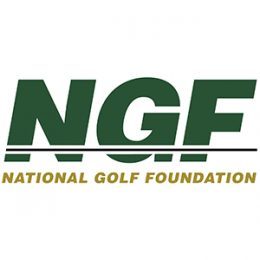Off-Course Specialty Retail Report Is Released
How and where many consumers are buying golf equipment is increasingly different than in years past. The most notable evolution in golf retail has been the shift toward more online sales – just like in most other markets – as well as a gravitation toward the experiential component.
In 2018, there was a 3.4% decline in the number of off-course golf specialty retail locations, with the total number of doors dropping from 708 to 684. Over the past four years, a period that included the closure of Golfsmith and its 2 million square feet of retail space, the market has declined by approximately 19%.
NGF MEMBERS CLICK HERE TO DOWNLOAD THE FULL REPORT
National off-course stores such as PGA TOUR Superstore, Golf Galaxy and the Worldwide Golf family of brands (Edwin Watts, Roger Dunn and The Golf Mart) represent 42% of all doors and account for 71% of total square footage in the market. Regional and independent stores — from family-owned shops to multi-door businesses such Austads, New York Golf Center, Carl’s Golfland and Moon Golf — represent 58% of the retail locations, and 29% of total square footage.

Customers getting a taste of the experiential component at a PGA TOUR Superstore location. (Photo courtesy: PGA TOUR Superstore)
In addition to these golf specialty stores, there are more than 1,800 sporting goods retailers such as DICK’S Sporting Goods or Academy Sports + Outdoors and Big 5 Sporting Goods that sell a significant amount of golf equipment and apparel along with a wide variety of additional items. There are approximately as many DICK’S locations across the U.S. as the total number of golf specialty retail stores.
Additionally, there has been a steady rise in specialty clubfitters that have a smaller retail footprint — an estimated 350 to 400 doors in total. This category includes operations such as GOLFTEC, Club Champion and True Spec. These businesses, along with a few others (Cool Clubs, The Club Fix) account for almost 70% of the specialty clubfitters.
The contraction in traditional brick-and-mortar locations in recent years does not correlate with a similar reduction in golf equipment spending. Rather, the contraction has more to do with a shift in the way consumers are buying products, as e-commerce golf websites or a company like Amazon can offer greater online convenience. DICK’S Sporting Goods, for example, said its e-commerce business grew by 17% last year and this evolution extends far beyond golf and sporting goods.
Brick-and-mortar stores have sought to adapt to this shift by focusing on broader experiential offerings such as club testing and fitting, indoor simulators, lessons and leagues.
There were 10 openings of golf specialty retail stores in 2018 and 34 closures, of which about one-half (18) were regional or independent locations.
The South Atlantic region, which features golf-rich states such as Florida, Georgia and the Carolinas, has the most golf retail stores, by far, with 184. Led by California, the Pacific Region has 111 golf specialty retail stores, followed by the golf-rich East North Central (states such as Michigan, Ohio and Wisconsin) with 81, and the West South Central (led by Texas) with 75.
Short Game.
"*" indicates required fields
How can we help?
NGF Membership Concierge

"Moe"
Learn From NGF Members
 Ship Sticks Secrets to a Hassle-Free Buddies Golf Trip
Ship Sticks Secrets to a Hassle-Free Buddies Golf Trip
Whether you’re the head planner of your upcoming buddies golf trip or simply along for the ride, we’ve gathered a few easy ways to keep everyone in your group happy.
Read More... Golf Course Turf, Soil and Water Quality Diagnostic Testing
Golf Course Turf, Soil and Water Quality Diagnostic Testing
As humans, we see our primary care physician on a regular basis to proactively evaluate our vital signs. Likewise, a superintendent should perform frequent diagnostic testing on their golf course.
Read More... Unlocking Distance: Launch Conditions and Angle of Attack
Unlocking Distance: Launch Conditions and Angle of Attack
We’ve long known that higher launch and lower spin is a powerful combination for generating consistently long and straight tee shots. A key factor in optimizing launch conditions, one often overlooked, is ...
Read More...



